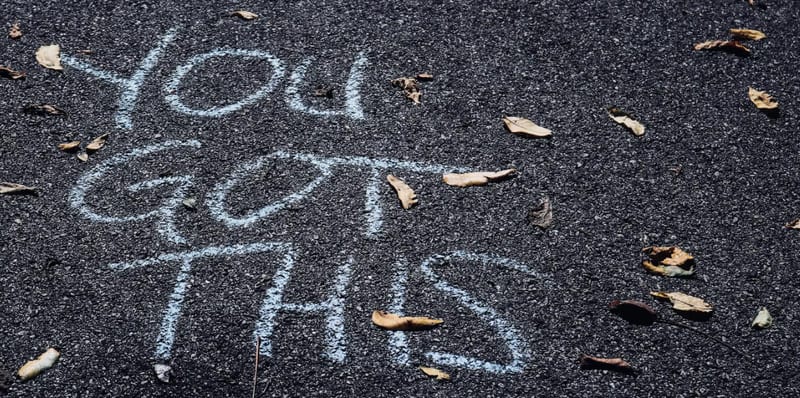Sports Visualization in Endurance Racing

I have learned that sports visualization (visualizing my performance) is an essential tool for a successful race. Visualizing successful race outcomes is not just about imagining the end result, but it is about preparing mentally alongside the physical training for the race.
I make sure that I train throughout the year in order to be in peak shape during race season. Also, I plan out my season early and pick out my bucket list of marathons to enter.
I have developed three tips on how to visualize successful race outcomes effectively.
Create a Detailed Mental Picture

This is one of the most important tips I can offer for a successful race outcome. I create a detailed mental imagery of the entire upcoming race and how it’s going to play out. This means visualizing not only the end result but also every step of the race.
This isn’t just me crossing a finish line in first place. It’s a realistic picture of how I”m going to feel at any point. This includes the moments I may experience pain, various nutrition stops, bathroom breaks, everything. I don’t want surprises during a race, and visualization techniques help me avoid them.
Before the race, I always make sure to visualize every aspect of the course, from the start to the finish line. I take note of the terrain, the elevation, and any tricky spots that I need to be aware of. I also make a mental note of any landmarks or signs that can help me stay on track during the race. If possible, I either find a video of the course or drive the course myself to better understand these landmarks.
When visualizing, I try to make the mental picture as realistic as possible. I imagine myself in the race, going through every step as if I were actually there. I imagine the sights, sounds, and even the smells of the race. I try to use this as a mental rehearsal of the race. I even picture when and where I will take in nutrition and fluids. If I need to, I’ll write these down so my mental imagery becomes visual imagery.
By creating a detailed mental picture, I am able to prepare myself mentally and physically for every step of the race.
Strangely enough, I like to focus on an upcoming race while taking a cold plunge. The extreme cold does a fantastic job of helping me focus intensely on something and helps me ignore the pain. Both things are helpful in a big race. The same goes during a hot shower. I’ll just stand there focusing on the race and the athletic performance I want. I don’t really try to do it, it just happens in both of those environments.
Focus on Positive Self-Talk

The second sports psychology tip I can offer for visualizing a successful race outcome is to focus on positive self-talk. Self-talk is the internal dialogue that we have with ourselves, and it can greatly affect our performance during the race. Negative self-talk can undermine our confidence and cause us to doubt our abilities, while positive self-talk can help us stay motivated and focused.
Before a race, I repeat positive affirmations to myself, such as “I’m lucky to be able to do this,” “I’m in great shape,” and “I can’t wait to get out there.” I also visualize myself crossing the finish line and achieving my goal. This helps me build my confidence, keep my mind focused on the right things, and stay motivated throughout the race.
During the race, I also make sure to continue with positive self-talk. I also try to remember to smile during the race. It’s been shown that smiling actually makes the pain feel less severe. I don’t smile continuously (people would think I’m a crazy person or something), but just when it gets rough.
When I feel tired or overwhelmed, I repeat positive affirmations to myself, reminding myself of my strengths and abilities. I also remind myself of the mental picture that I created before the race, visualizing myself completing each step of the race successfully. This definitely helps me push through any challenges that may come my way.
Use Data to Enhance Your Sports Visualization

Another one of my visualization techniques is to use data to enhance my mental imagery. Data is a powerful tool that can help us track our progress and make informed decisions. It helps my confidence level when I have statistics to back up what I’m expecting. It also helps keep me in check that I’m not going to swim like Michael Phelps on race day (unfortunately).
For example, using a good triathlon watch can help a ton. By tracking our running speed, splits, and heart rate we can help us visualize how hard we are pushing ourselves and if we need to adjust our race plan. I purposely use a marathon pacing chart to strive to be faster. Additionally, tracking our physical performance over time can give us valuable insight into what works best for us. This data-driven approach to visualization helps us set realistic goals and prepare properly for race day.
Before any race, I always look at my past workout data to help my visualization. I look at the times and distances of previous races, as well as any other important metrics. This helps me create a mental picture of the race that is based on reality.
Conclusion
Sports psychology isn’t new, and mental imagery has been used by elite athletes forever. Many people say that athletics is 10% physical and 90% mental, which is probably true. If you think you can do it, you can.
If you have any questions or would like to learn more about how visualization can help you achieve your goals, feel free to reach out to me. I am always available to offer advice and support to endurance racers who are looking to take their performance to the next level.





